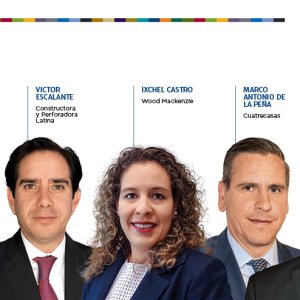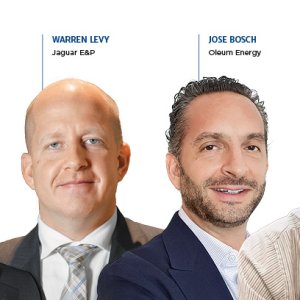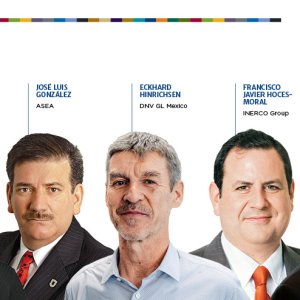
Technology Trends That Facilitate the Transformation of Mobility
The CEO of CTS Embarq, Adriana Lobo, began by talking about the correlation between air quality and mobility, highlighting the role of technology in leading efficient urban mobility. Along this line, Alejandro Morales, Director General of Econduce, told us that his company was partly created to promote a responsible use of vehicles. “Econduce now has 30 charging stations and has provided over 50,000 trips. Since we cover trends such as the shared economy and electric vehicles, we decided to cover the whole chain and offer scooters and chargers simultaneously,” he detailed, highlighting the company’s focus on technology. “We invest in technological development, including data bases that allow us to increase connectivity, as we do not see Econduce as a stand-alone mobility solution.” Morales commented that new alternatives to privately-owned cars should not just be used in case of environmental contingencies, but rather incorporated into daily mobility.
Lobo proceeded to ask Jorge Vallejo, Director of Exports, International Affairs and Governmental Relations at Nissan Mexico, about the industry’s perspective on the changing role of cars, given their environmental impact. He began by stating that many hopes of slowing down climate change are being placed on the automotive industry. “The authorities are desperate and they saw a quick way to reduce carbon emissions by limiting the automotive industry. However, the outcome is producing different results to those expected. Vehicles are not the only or main source of air pollution, and that just became evident.” Vallejo told the audience and panelists that Nissan has been exploring new technologies for more than 70 years, working to make clean vehicles accessible to everyone. However, cost is not the main variable, as private vehicles are seen as a sign of status in Mexico. Therefore, the adoption of cleaner technologies must undergo a change of paradigm.
Lobo intervened asserting that sales have not decreased in the automotive industry. In her view, the main issue does not come from the industry, as it is a matter of rethinking car use. She introduced Scania’s Director General, Enrique Enrich, who began by pointing out that the vehicle park is a key cause of pollution, thus fleet renovation is crucial. “Transportation has to be made inclusive, accessible, and environmentally friendly. However, it needs a responsible framework that supports people, particularly those that use the public transportation system.” He said public transportation in Mexico has plenty of room for improvement in order to become accessible. In addition, it should seek to be sustainable, keeping a balance between the economic and the environmental aspects.
Afterwards, Claudia Gutiérrez, Director of Sustainable Transport at DINA, touched upon the subject of transparency, claiming there are no clear public policies on mobility. “I do not see an interconnection between different government entities and cities,” she lamented. In her view, the next step would be to shift to gas-powered vehicles, and the needed infrastructure is already being built. “We need public policies with long-term vision that will not be affected by changes in the administration. Let us keep in mind that transparency in public policy provides certainty to the industry.”
Jorge Suárez, Director of Electromobility at VOLVO, echoed Gutiérrez’ concern, saying he does not feel certainty of the existence of a strategy. Instead, the industry moves according to what it is selling at that moment. “The main problem in the city is the fact that there are 4.5 million vehicles, plus the heavy-duty vehicles that come and go, 18,000 microbuses that were made before 1994, and 5,000 combis. Mexico City is addicted to vehicles.” He claimed Mexico City is facing a considerable challenge because public transportation is the most used form of mobility, as well as the most hated one. “In line with the country’s emission reduction goals and climate change actions, more Metrobús lines are planned, which will prevent the emission of 2 million tonnes of CO2 equivalent gases.”
Lobo said she does see some goals, but that they do not have an assigned budget. With this in mind, she asked where the main barriers to change were. Gutiérrez insisted on the lack of proper policies or program continuity. “The main barrier is that there are no incentives for the industry. Turning to gas-powered vehicles would increase technology costs by 35%, Euro 6 will increase by 25%, and electric cars cost four times as much. Mexican carriers are moving from drivers to business people, and as such, they seek to reduce costs. However, this will only be achieved through international assistance.” Vallejo said that although the barriers exist, there is a lack of willingness to change. He compared Mexico to countries where electric vehicles experience high sales. “The automotive industry is more than willing to change, which is evident when you look at the areas where we are investing. In order to make self-driving vehicles a reality, restrictions have to be removed and programs implemented.” Enrich noted that it is easy to criticize the authorities, but manufacturers do have a share of the responsibility. “The industry is not doing its best job at informing. For instance, people believe hybrid technologies pollute less than natural-gas powered engines.” In his critical intervention, he stressed that public resources should be used responsibly, so before making the vehicular park entirely electric, the authorities should invest in schools and hospitals.














